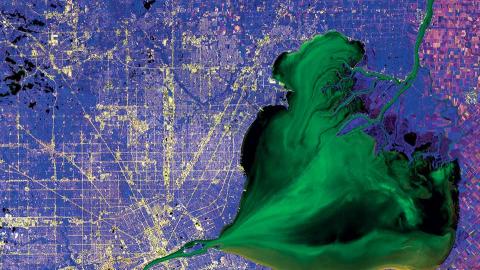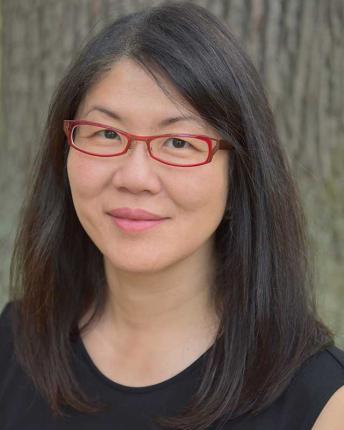

The microscope, the telescope, the camera — through history, these innovations have changed how we see beyond the naked eye and helped us to better understand the world around us.
In recent decades, satellites have given us a new vantage point. And in the past few years, a new NASA satellite has provided valuable insight on how humans interact with the world around them.
“We are in a transformative period in our history,” said Karen Seto, Frederick C. Hixon Professor of Geography and Urbanization Science at the Yale School of the Environment (YSE), at the recent Nobel Prize Summit, a worldwide gathering of Nobel Prize laureates, scientists, policy makers, business leaders, and youth leaders. “All of the issues being discussed at this summit are tied to the rapid urbanization of our planet, which is central to many of the grand challenges our society is facing.
“With satellite imagery and remote sensing, we have a better understanding of these challenges.”
The summit, titled “Our Planet, Our Future,” explored the urgent issues of climate change and biodiversity loss, increasing inequality, and technological innovation in support of societal goals. The three-day event featured dozens of Nobel laureates, as well as dignitaries like former U.S. Vice President Al Gore, National Institute of Allergy and Infectious Diseases Director Anthony Fauci, and the Dalai Lama. Seto, a member of the U.S. National Academy of Sciences, joined an academic science session on technology and innovation with scholars from around the world, including Nobel laureates Jennifer Doudna (2020, Chemistry) and Richard Roberts (1993, Physiology/Medicine).

Seto, an expert on contemporary urbanization and global environmental change, discussed NASA’s Black Marble project, a first-of-its-kind satellite data project on nighttime lights which provides insights on human activities and human interactions with the environment.
“These data have a wide variety of applications, providing information on economic activity, changes in energy use, wildfires, and effects of natural disasters, like hurricanes,” said Seto. “There’s nothing like seeing our world, our regions, being affected by sea-level rise or climate change. This imagery is incredibly powerful.”
In preparation for the summit, Seto co-authored a paper in the journal Ambio, “Our future in the Anthropocene biosphere,” which explained how the COVID-19 pandemic has revealed the interconnectedness of a globalized world in rapid change. The authors provided an overview on “the current situation where people and nature are dynamically intertwined and embedded in the biosphere, placing shocks and extreme events as part of this dynamic.” As humans are the dominant force of change on the planet, they explained, our actions can either be beneficial or hostile for life and well-being across the biosphere.
– Josh Anusewicz joshua.anusewicz@yale.edu
Published
May 3, 2021